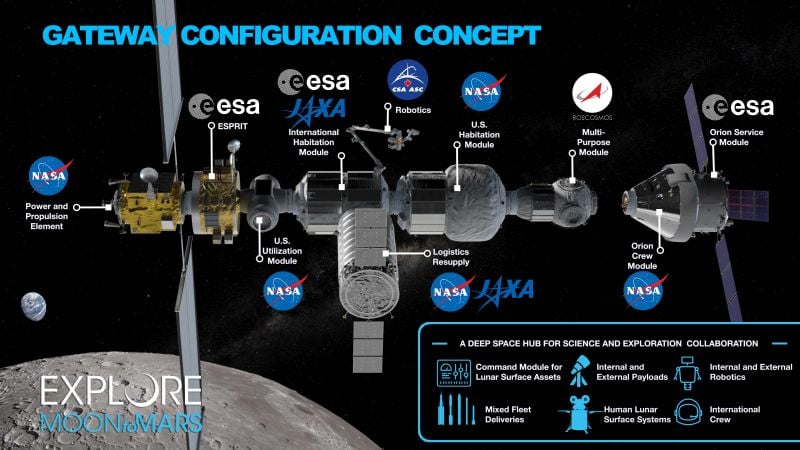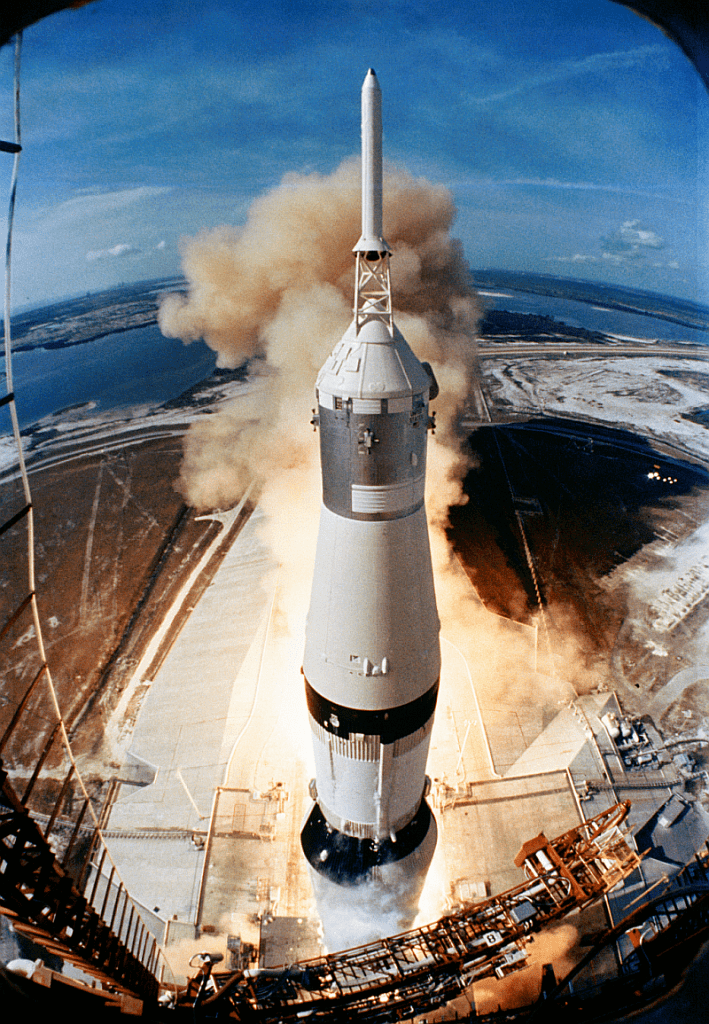After months of discussion, the space agencies behind the Lunar Gateway have decided how the space station will orbit the Moon. NASA and the ESA are developing the Lunar Gateway jointly, and the orbital path that it will follow around the Moon is a key part of mission design. It'll affect all the vital aspects of the mission, including how spacecraft will rendezvous and land at the station.
NASA and the ESA have decided on what's called a near-rectilinear halo orbit (NRHO.) That means the Gateway will follow an eccentric orbit around the Moon. Sometimes, it'll be as close as 3,000 km to the lunar surface, and other times it'll be 7,000 km away.
"Finding a lunar orbit for the gateway is no trivial thing," said Markus Landgraf, Architecture Analyst working with ESA's Human and Robotic Exploration activities, in a press release.
The Lunar Gateway orbit will rotate together with the Moon. It's called a halo orbit, because as seen from the Earth, it looks like a halo around the Moon.
The Gateway's NRHO is a seven-day cycle. Each seven days it will make its closest approach to the Moon. That means that each seven days there's a window for launching from the station to the lunar surface, and also a window for returning to the station.
The NRHO makes use of gravitationally balanced points that exist in the Solar System. Due to the interplay between the Earth and the Moon's gravity, the Lunar Gateway can sit in this halo orbit, almost like it's caught trapped by the gravity of the two bodies.
The stability of these points in space is ideal for long-term missions like the Gateway. It's not perfect, because over time it'll become unstable. But it won't take much energy to correct it.
"If you want to stay there for several years, the near rectilinear halo orbit is slightly unstable and objects in this orbit do have a tendency of drifting away," said Landgraf.
The orbit also dictates some aspects of the Gateway's design. But since it's modular, there's lots of flexibility.
A key aspect of the choice of orbits is energy.
To escape Earth, spacecraft need a lot of energy. Once a spacecraft arrives at the Moon, it needs to get rid of that energy in order to land safely. That means carrying enough fuel and thrusters to slow itself. Then, when it's time to return to Earth, it needs a big boost of energy again. The Lunar Gateway will change that.
"In human spaceflight we don't fly one single, monolithic spacecraft," explains Florian Renk, Mission Analyst in ESOC's Flight Dynamics Division. "Instead we fly bits and pieces, putting parts together in space and soon on the surface of the Moon. Some parts we leave behind, some we bring back – the structures are forever evolving."
The key point is the energy that needs to be scrubbed to land on the Moon. By docking on the moving Gateway, a spacecraft can leave some parts of itself at the Gateway and save some of that energy. It takes a lot less energy to launch from the Gateway to the Moon, and back, than it does to launch from the Earth to the Moon and back.
That means that a trip to the Moon and back won't require a massive rocket like the Saturn V that took the Apollo astronauts to the Moon. Much smaller rockets like the Ariane can do the job. In a way, the Gateway will be like an energy bank that gives missions to the Moon a lot more flexibility and efficiency.
The permanent Lunar Gateway in this orbit around the Moon will be a staging point for lunar exploration. Parts can be left behind, picked up and assembled. After liftoff from the Moon, only a moderate manoeuvre will be needed to slow a visiting spacecraft to rendezvous with the Gateway.
Lunar Gateway will be built during the 2020s as not only a staging area for missions to the Moon, both crewed and robotic, but it'll also be a scientific laboratory. It'll also build on our understanding of space travel, and will be a step towards exploring Mars. We can stockpile supplies there for trips to Mars, or other possible destinations deeper into the Solar System. Since it's removed from Earth's magnetic field, it's a good place to test technologies that can't be tested at the ISS or in proximity to Earth.
"Our analysts and flight dynamics experts provide support to a full range of missions, including some of the most complex and exciting like the lunar Gateway," said Rolf Densing, ESA's Director of Operations. "We can't wait to see this ambitious international endeavour realised."
More:
- Universe Today: Is NASA Sacrificing Sending Astronauts to Mars in Order to Get to the Moon Sooner?
- Universe Today:
 Universe Today
Universe Today


